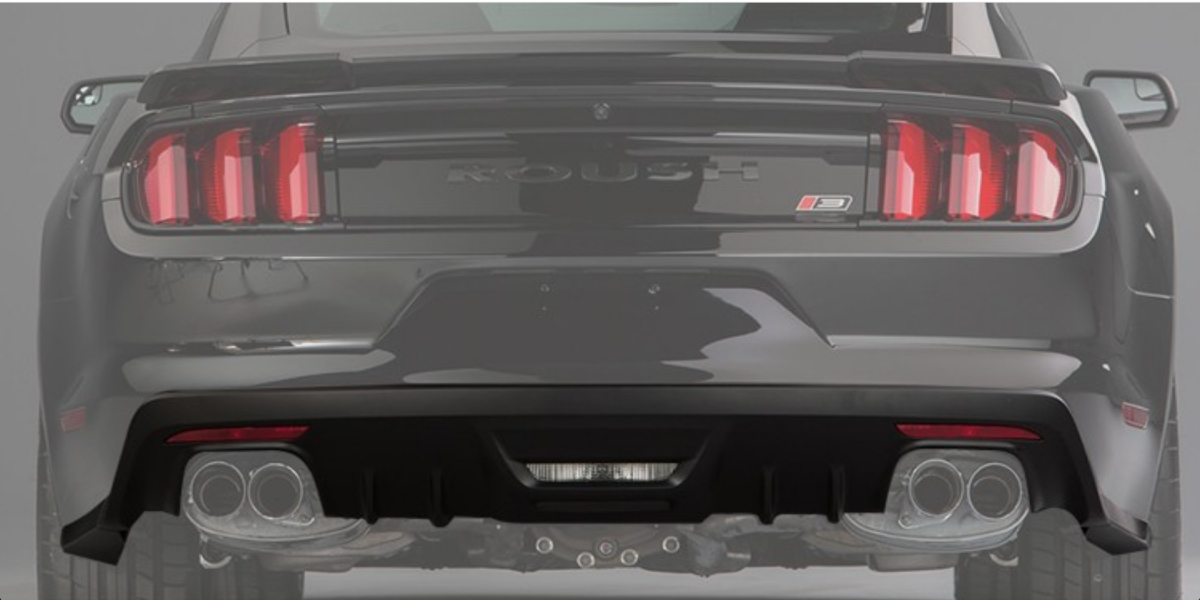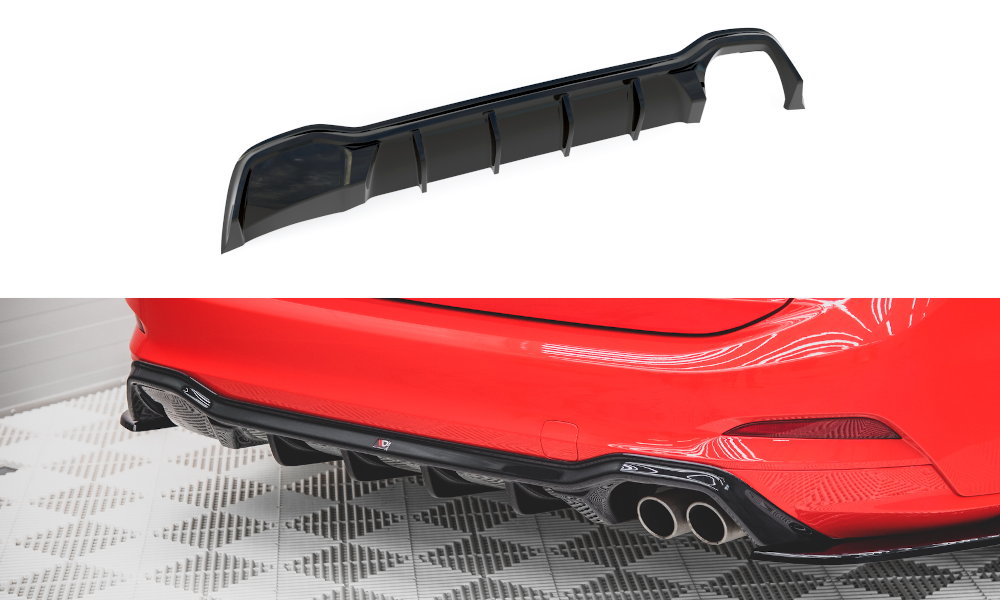A rear valance on a car is a panel located at the back, below the bumper. It aids in aerodynamics and aesthetics.
Understanding the role and significance of a rear valance can enhance your knowledge of car design and functionality. This component not only contributes to the vehicle’s sleek appearance but also plays a crucial role in its aerodynamic performance. By directing airflow around the car, the rear valance helps to reduce drag and improve fuel efficiency.
It often houses exhaust tips and can be a distinctive styling element, differentiating one model from another. For car enthusiasts and everyday drivers alike, recognizing the impact of such details can greatly influence vehicle choice and maintenance. Emphasizing its dual purpose, the rear valance merges form with function, showcasing the intricate balance of engineering and design in modern vehicles.

Credit: www.vividracing.com
Introduction To The Rear Valance
Car enthusiasts often discuss various parts of a vehicle. One lesser-known part is the rear valance. This section explores the rear valance and its role in car design.
The Basics
A rear valance is a panel located at a car’s back. It sits below the bumper. This component can be subtle or prominent, depending on the car’s design.
Importance In Vehicle Design
The rear valance has a key role in a car’s aesthetics. It often houses exhaust tips and can affect aerodynamics. Car makers use the valance to enhance a vehicle’s look.
Valance types vary from simple to sporty. They may come in different materials like plastic or carbon fiber. Each type serves both function and style.
Understanding the rear valance helps appreciate car design better. It’s not just a decorative piece. It merges form and function on the road.
Anatomy Of A Rear Valance
The rear valance is a car component that garnishes the lower back end. It shapes airflow and adds aesthetic appeal. Let’s explore its anatomy, focusing on materials and common designs.
Materials Used
Diverse materials craft rear valances for durability and style.
- ABS plastic: Lightweight and flexible.
- Fiberglass: Offers a sleek look, more rigid.
- Carbon fiber: High strength, yet costly.
- Sheet metal: Traditional, can be heavy.
Common Designs And Styles
Rear valances vary in design, catering to different tastes and car models.
| Design Type | Style Features |
|---|---|
| Stock | Matches original manufacturer look. |
| Custom | Unique shapes, may include cutouts or diffusers. |
| Aero | Engineered for airflow, often seen in racing. |
| Luxury | High-end materials, intricate designs. |
Functions Of A Rear Valance
Understanding the functions of a rear valance can enhance your knowledge of car design. A rear valance, or rear bumper diffuser, is not just for show. It serves multiple purposes that improve your driving experience.
Aerodynamic Benefits
The rear valance plays a key role in a car’s aerodynamics. It helps to streamline airflow, reducing drag. This can lead to better fuel efficiency and stability at high speeds. A well-designed valance can also improve the car’s grip on the road by managing the air that exits from under the vehicle.
Protection Against Elements
A rear valance protects your car’s undercarriage from dirt, debris, and water. It acts as a barrier, shielding important components from the elements. This helps to prevent rust and damage, prolonging the life of your vehicle.

Credit: maxtondesign.com
Impact On Vehicle Performance
When we discuss the impact of a rear valance on vehicle performance, we’re diving into how this component can change the way a car behaves on the road. A rear valance isn’t just for show; it plays a role in the car’s aerodynamics. Let’s explore how it affects fuel efficiency and the overall stability and handling of the vehicle.
Fuel Efficiency
A rear valance can streamline airflow under the car. This reduction in drag translates to better fuel economy. The smoother the air flows, the less effort the engine needs to push the car forward. Drivers may notice a slight increase in miles per gallon with a well-designed rear valance.
Stability And Handling
Beyond fuel savings, a rear valance can improve a car’s grip on the road. It does this by managing air turbulence at the back of the vehicle. A stable air flow can press the car down, enhancing tire traction. This means better control in corners and at high speeds. Ultimately, a rear valance contributes to a safer and more responsive driving experience.
Customization And Aftermarket Options
Car enthusiasts love to personalize their rides. A rear valance is a popular choice. It adds style and aerodynamics. The market offers many options. You can choose a valance that suits your taste and car model. Let’s explore how to pick the right one and install it.
Choosing The Right Valance
Material matters. Look for durable options like ABS plastic or fiberglass. Consider the design. It should complement your car’s lines. Brands matter too. Go for reputable manufacturers. Check compatibility. The valance must fit your car model. Read reviews. Others’ experiences can guide your choice. Think about paint. Some valances come pre-painted. Others require custom painting. Decide based on your budget and preferences.
Installation Tips
Installing a rear valance can be straightforward. First, gather the right tools. You’ll need screwdrivers, clips, or adhesive. Follow the instructions. Most valances come with a guide. Clean the area. Make sure the bumper is free of dirt and grime. Test fit the valance. This ensures a proper fit before final installation. Secure it properly. Use all mounting points for a snug fit. Consider a professional. If unsure, a skilled technician can help.

Credit: www.youtube.com
Maintenance And Care
Rear valances are key to a car’s aesthetics and aerodynamics. They need regular maintenance. Proper care extends their life and ensures they look good.
Cleaning Tips
Keeping a rear valance clean is simple. Use these steps:
- Start with a rinse to remove loose dirt.
- Use a soft sponge and mild car soap.
- Gently scrub the surface.
- Rinse thoroughly with clean water.
- Dry with a microfiber cloth to avoid scratches.
Regular cleaning prevents dirt buildup. It also keeps the valance in top condition.
When To Replace
Inspect the rear valance often. Look for these signs:
- Cracks or significant damage.
- Excessive scratches or paint wear.
- Loose or misaligned parts.
Replace if damage affects performance or looks. Choose quality parts for best results.
Legal And Safety Considerations
Understanding the legal and safety considerations is crucial when dealing with car modifications. A rear valance, though often aesthetic, must adhere to strict regulations. It’s essential to consider how this component aligns with the law and impacts safety and insurance.
Regulatory Compliance
Cars must meet specific standards. Rear valances are no exception. They must not obstruct lights or license plates. Materials used should withstand road conditions.
- Check local laws before installation
- Ensure visibility of all car lights
- Use durable materials
Impact On Insurance
Modifications can affect insurance policies. Inform your insurer about changes to your car. This ensures coverage remains valid. Upgrades can potentially increase premiums.
| Modification | Insurance Impact |
|---|---|
| Adding a rear valance | May increase premium |
| Non-disclosure | Policy could be void |
Real-world Examples
When talking about car aesthetics and aerodynamics, the rear valance is a key player. This section dives into real-world examples to showcase the rear valance’s role in vehicles. We explore case studies and owner experiences that highlight its importance and impact.
Case Studies
Study 1: Sport Sedans – Researchers compared two sport sedans, one with a rear valance and one without. The sedan with the valance showed improved airflow and reduced lift at high speeds. This led to better stability.
Study 2: Electric Cars – An electric car model introduced a new rear valance design. It increased the vehicle’s range by reducing drag significantly.
Owner Experiences
- Performance Enthusiasts – Car owners with enhanced rear valances reported a sportier look and improved exhaust sound.
- Daily Drivers – Some owners noticed their cars were less prone to dirt accumulation on the rear bumper, attributing this to the rear valance.
Bold looks and practical benefits make the rear valance a favorite among car enthusiasts. These examples show its value in both design and function.
Conclusion
Understanding the role of a rear valance in a car’s design and aerodynamics can enhance your vehicle knowledge. This component not only adds a sleek finish but also contributes to improved performance. As car enthusiasts or owners, recognizing the importance of a rear valance could lead to better maintenance and vehicle customization choices.
Keep these insights in mind as you consider upgrades or repairs for a more stylish and aerodynamically efficient ride.

